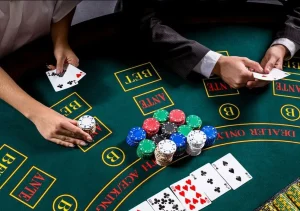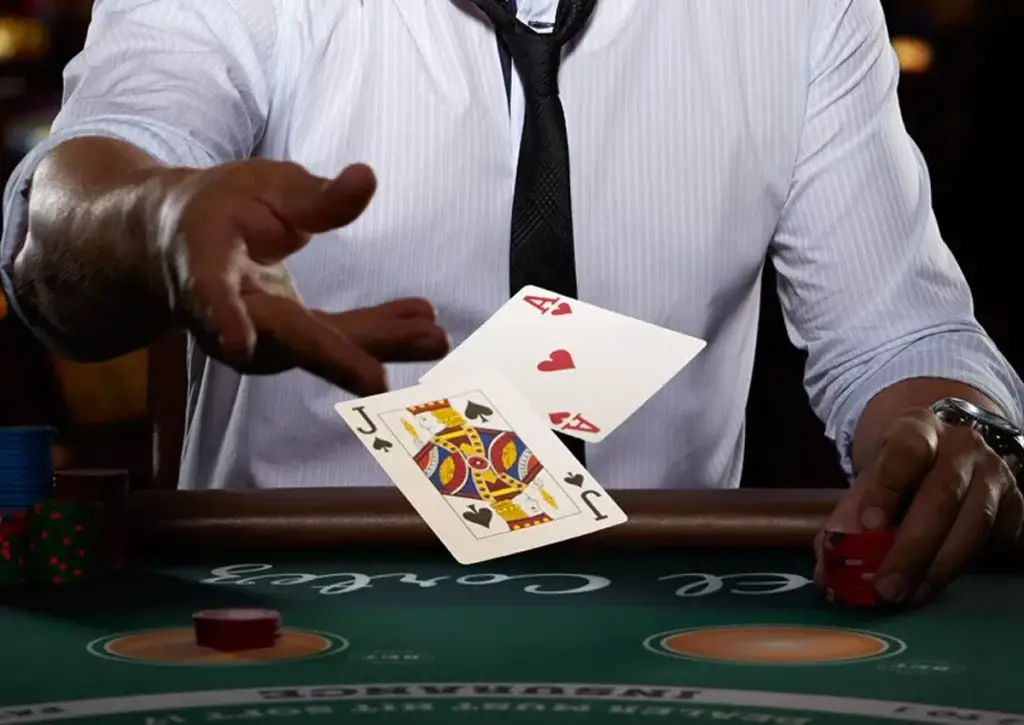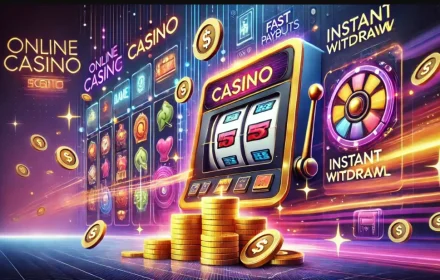Blackjack wins the hearts of players with its intellectual component. This game combines strategy, calculation and the ability to control emotions. Among card entertainment, it stands out for the simplicity of the rules and the ability to influence the outcome.
How to play blackjack in the casino is a question that concerns both beginners and professionals. The ability to find the balance between risk and the chance of winning turns the format into a real art.

The rules: how to play blackjack in a casino
The goal is simple: score 21 points or as close to that value as possible without exceeding it. The cards have the following values:
- 2 to 10 – the denomination corresponds to the number.
- Jack, queen, king – 10 points each.
- Ace – 1 or 11 depending on the combination.
For example, the combination of an Ace and an Eight gives either 9 or 19 points. A win is achieved at 21 points (“straight”) or if your cards give more points than the dealer’s without exceeding 21. Knowing terms such as “straight”, “overcall” and “hard hand” becomes the basis for success at the table.
Schematic of the game process
The game starts with the dealer dealing two cards to each player and himself. One of the dealer’s cards remains closed. A decision must be made whether to take an extra card (hit) or stop (stand). If the sum of cards exceeds 21, a bust occurs and the bet loses. The dealer is obliged to complete the cards until his hand reaches 17 points. At the same time, the “soft” 17 (Ace and 6) gives the dealer more chances for manoeuvre.
Basic strategy: how to play blackjack in casinos
 Basic tactics help to significantly minimise the casino’s advantage, turning the game into a balance between mathematics and intuition. We strongly recommend always splitting aces and eights (split), as this improves your chances of winning by forming two potentially strong hands. Avoid splitting tens, as their combination is already close to the ideal total of 20 points.
Basic tactics help to significantly minimise the casino’s advantage, turning the game into a balance between mathematics and intuition. We strongly recommend always splitting aces and eights (split), as this improves your chances of winning by forming two potentially strong hands. Avoid splitting tens, as their combination is already close to the ideal total of 20 points.
Double down is the best solution when you have 11 points in hand and the dealer’s card is between 2 and 10. This allows you to significantly increase your potential winnings, especially if the next card is a ten. For example, if the player has 12 points and the dealer has an open four, it is recommended to stop (stand), as the dealer is likely to overcall. However, if the player has 16 points against the dealer’s ten, it is better to take one more card so as not to leave the initiative to the opponent.
Decision tables
Blackjack strategy tables are an indispensable tool for those who want to optimise their actions at the table. They are designed based on probabilities and show the optimal solutions for each scenario. For example:
- If the player has 16 points and the dealer has an open card of 7, you should take a card (hit), as the chances of improving your hand are higher than leaving it up to the dealer.
- If the dealer has 13 points against the dealer’s 6, it is recommended to stop (stand), as the probability of overcalling the dealer is very high.
We advise you to study and use such tables to know how to act in any game situation. This is especially important for beginners, as strategic thinking takes time to master.
Following these tips and applying the basic strategy in practice, reduce the casino advantage to a minimum of 0.5%. It is such knowledge that answers the question: how to play blackjack in the casino.
Blackjack card counting secrets
Card counting is a way of controlling the balance of high and low cards in a game. We advise using the Hi-Lo system, where:
- Cards 2-6: +1.
- Cards 7-9: 0.
- Cards 10 and aces: -1.
Keep score by adding and subtracting values with each card revealed. If the score is positive, increase your bets to take advantage.
Legal aspects and restrictions
Card counting does not break the law, but casinos actively fight such players. Automatic shuffling machines, multiple decks and video surveillance are used. It is recommended to behave with caution to keep the advantage.
Blackjack variations: classics and innovations
Classic blackjack remains the most popular format, but its variations add dynamics to the game. For example, Spanish 21 removes the tens from the deck to increase the house advantage, while Open Card Blackjack allows you to see both of the dealer’s cards for easier decision making.
If you’re looking for a new experience, try ‘Pontoon’, a British variation that uses the terms twist and stick.
Choosing a variation for beginners
We recommend starting with classic blackjack. The simplicity of the rules and the ability to use basic strategy create an ideal learning environment. Learning the different variations can be postponed until you feel confident.
Blackjack terminology: the language of the pros
Terminology provides the foundation for a professional approach to the game. Knowing the key terms allows you to navigate faster at the table and understand how to play blackjack in the casino. Let’s highlight a few basic concepts:
- Hit – taking an extra card to increase points. This action is used when the current sum of cards is far from 21.
- Stand – cancellation of further actions, if the current combination of cards satisfies you.
- Double down – double your bet with one additional card. Recommended to use at 11 points.
- Split – splitting a pair into two separate hands. Most often used for aces and eights.
- Bust – overcall, which leads to automatic loss.
These terms help to form the correct strategy and become the language of communication at the gaming table.
Practical use of terms
Being familiar with terms increases confidence at the table and makes it easier to interact with the dealer. For example, the phrase “Hit me” means you want to take another card, and “Stand” signals the end of the action. We advise you to pay attention to situations where the terms play a crucial role. For example, “Split” allows you to split two eights, creating two strong hands instead of one weak hand. Such actions provide a tactical advantage.

Knowing and correctly applying the terms turns the process of playing into a professional confrontation. Understanding how to play blackjack in a casino starts with terminology that helps build successful strategies.
The path to mastery
 Knowing the rules, using basic strategy and understanding the principles of card counting will help you become a more confident player. By following professional advice and understanding how to play blackjack in casinos, you can improve your results and enjoy the game. The game requires not only luck but also skill, which develops with experience.
Knowing the rules, using basic strategy and understanding the principles of card counting will help you become a more confident player. By following professional advice and understanding how to play blackjack in casinos, you can improve your results and enjoy the game. The game requires not only luck but also skill, which develops with experience.
 en
en  ru
ru  de
de  ar
ar  es
es  hi
hi  fr
fr  nl
nl  it
it  pt
pt  el
el 



